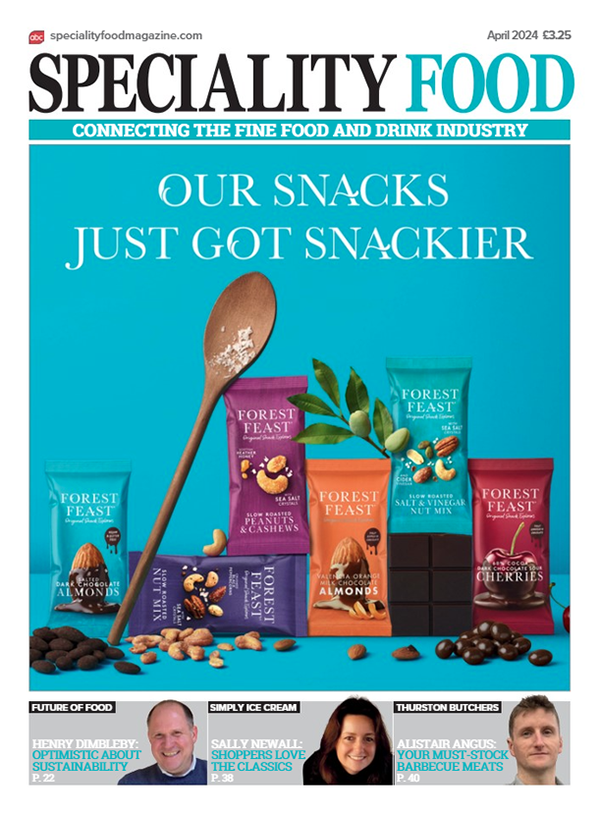“Raw! Huh yeah. What is it good for?”

- “Sticky fingers”
- “Everyone’s a winner”
- “Myths and legends of Turophilia”
- “When ‘cheese’ is not cheese”
- “Don’t disrespect the Cheddar”
Our dog, Dexter (the cereal killer), is fed a diet called Raw Meaty Bones. Akin to the ‘paleo’ regime for humans, the idea is that dogs should return to the foodstuffs available to their antecedent, the wolf. There’s something attractive about the presumed authenticity of food as fuel, from a time before processing and genetic modification
In the UK we tend to reserve use of the word ‘raw’ for vegetables, meat and sushi; in other parts of the world, unpasteurised milk and cheese are classed as ‘raw’. Indeed in the US, the charmingly named Oldways Cheese Coalition celebrates Raw Cheese with an annual jamboree of promotional activity. For independent retailers and producers alike, this makes a lot of sense.
For years British shoppers were led to believe that eating unpasteurised dairy products was a little like playing Russian roulette – invigorating perhaps, but potentially harmful. Thankfully a number of producers carried on making their cheese in exactly the same way they always had; distribution and availability became less widespread however. But there’s been a fight back. Writers and bloggers have extolled the taste advantages of unpasteurised cheeses for a decade or more; pioneers like Joel Schneider have added to the British cheese canon with great cheeses like Stichelton, reimagining popular pasteurised varieties, but with unpasteurised milk.
Savvy consumers realise that there’s a broader range of flavours to experience from unpasteurised cheeses and also that a little extra activity in the gut is possibly not a bad thing in an era when there’s much finger-pointing about the growth in allergies. Certain unpasteurised cheeses are not taboo in pregnancy – it’s worth looking at the latest recommendations from NHS Direct. Here’s the current list, (reviewed in July 2015):
“Cheeses that are safe to eat during pregnancy: Hard cheeses are safe to eat during pregnancy, even if they’re made with unpasteurised milk. These include: Cheddar, Edam, Emmental, Gouda, Gruyere, Jarlsberg, Parmesan, Stilton.”
I take issue with the way that the examples are primarily of non-domestic cheeses – there’s no mention of Red Leicester, Wensleydale, Cheshire and other territorials, but the broad range of endorsed cheeses is certainly an eye-opener for many expectant mothers. I recommend printing the sheet out to give to pregnant shoppers who may have been relying on over-cautious hearsay.
The truly great news for independent retailers is that consumers don’t associate unpasteurised produce with supermarkets. When they seek it out, their first port of call is to delis and specialist retailers. Recently I helped a client decide on a launch range of cheeses for a new venture. We ensured that, wherever possible, we had an outstanding unpasteurised option for every class of cheese. A note of caution, though – many unpasteurised cheeses reveal their charms in a slow and subtle way, so if giving samples to shoppers, then allow time for them to ‘get it’. These gems are unlikely to be delivering their characteristics in the first 2 or 3 seconds of mouth time.
“Raw. What’s it good for?” Absolutely nothing? Nope – I’d say attracting customers with a point of difference!
more from Town Crier
-
“Black and White thinking”
08 August 2019 Town CrierLast time around I suggested trumpeting the benefits of the produce we offer, and the importance of conveying its taste and of making each purchase viscerally appealing. -
“We’re a resourceful bunch”
17 May 2019 Town CrierIt’s almost exactly 10 years ago that I sat down to create the first business plan for my cheesemonger. -
“Waxing lyrical”
12 February 2019 Town CrierOn a family holiday to Normandy in 1965, my parents and their adult friends were hugely excited by Livarot and Camembert – seldom seen back home in Hampshire.





